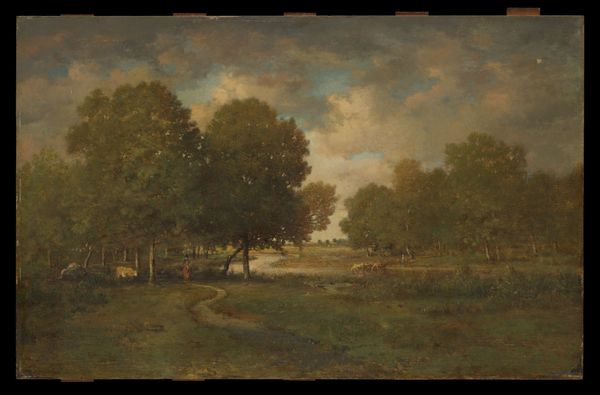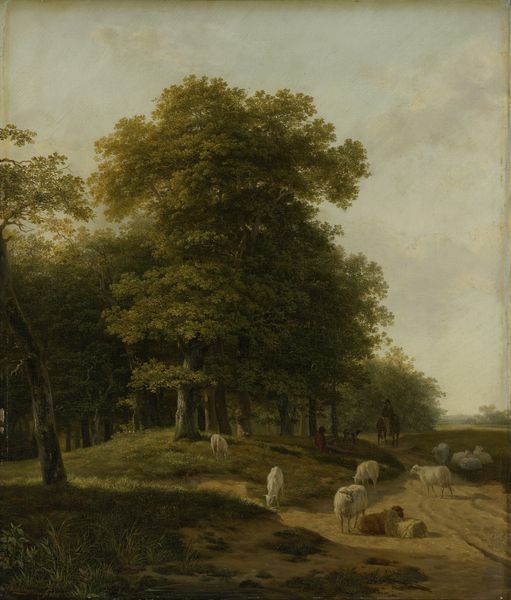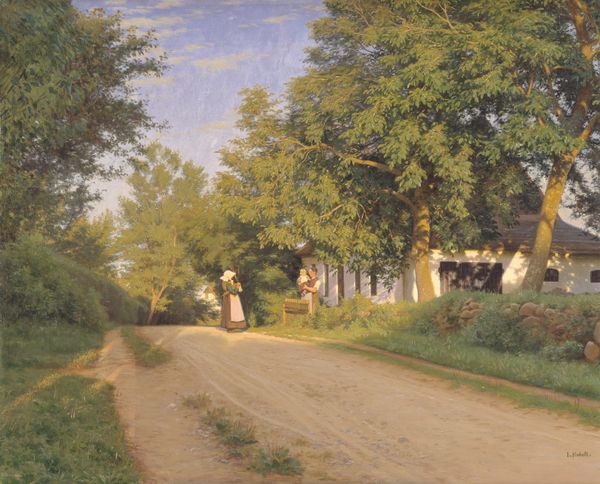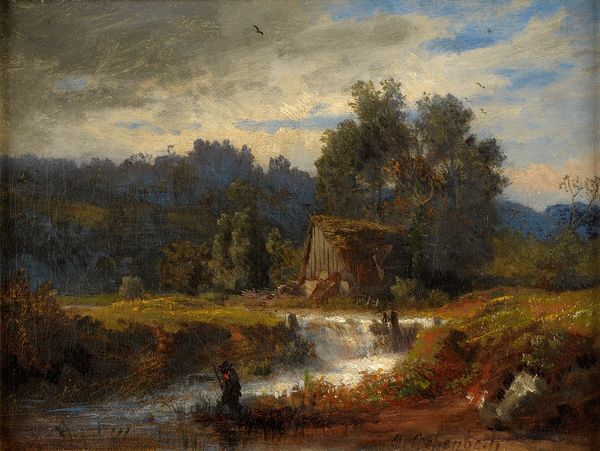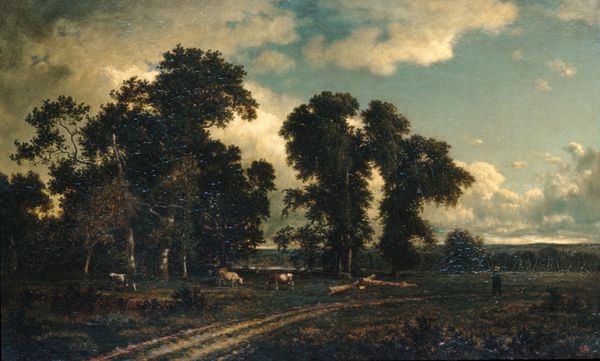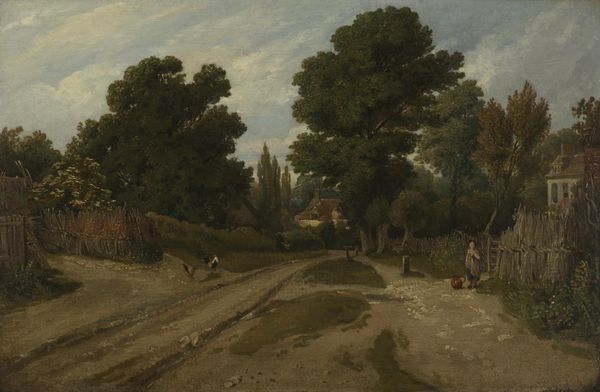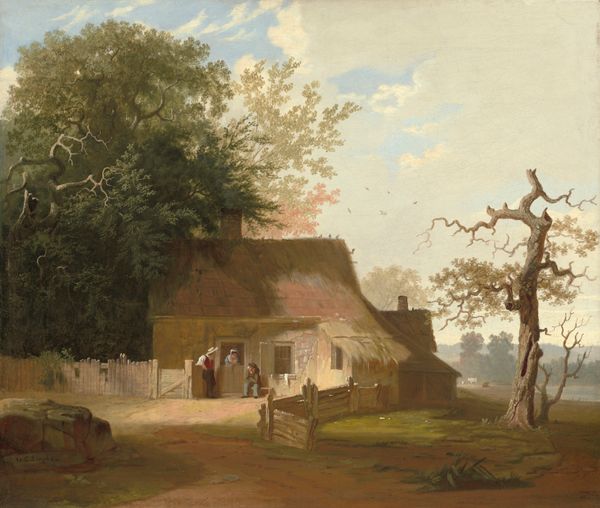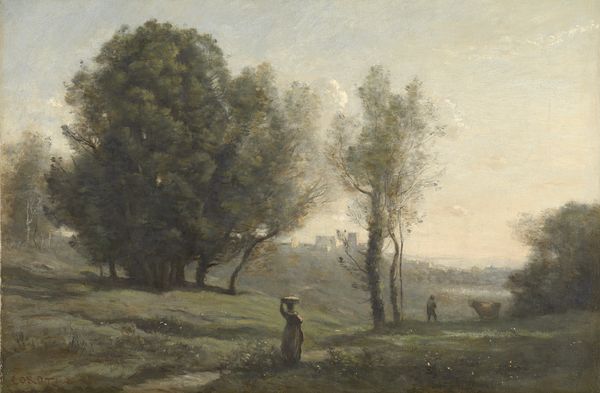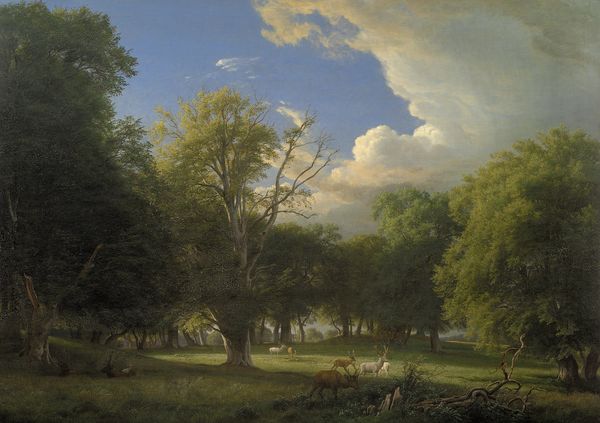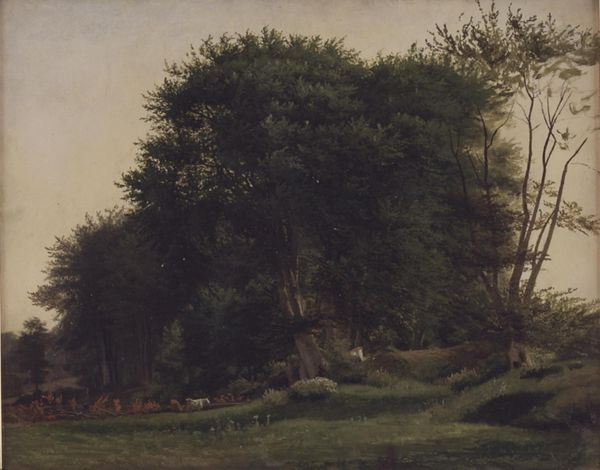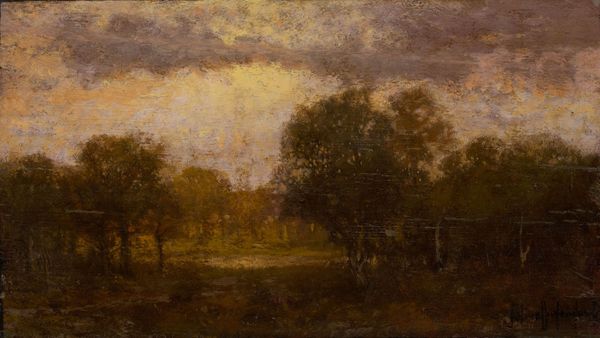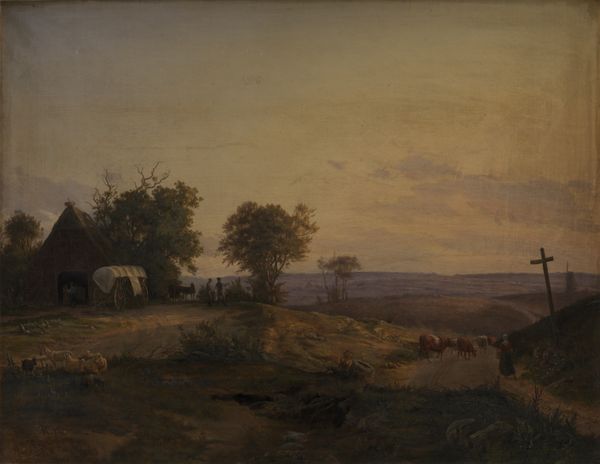
Dimensions: 82 cm (height) x 108.5 cm (width) (Netto)
Curator: What a serene scene! This is "Outside Ariccia," painted by Thorald Brendstrup in 1882. Editor: Serene is one word. For me, there’s a sense of fading light, almost melancholy. It makes me think about empire, decline, that sort of thing. Curator: An intriguing first take! This oil on canvas shows a view of the Italian countryside, near the town of Ariccia. Brendstrup, along with many other Scandinavian artists, travelled south to find new inspiration. You can almost feel the Italian light. Editor: Definitely sense the romantic landscape tradition. But why Ariccia, specifically? And why depict the figures so small? It reminds me of genre paintings with its suggestion of everyday rural life. Curator: Well, Ariccia and the surrounding Alban Hills were popular spots precisely for their picturesque qualities. But Brendstrup was very invested in the political tensions around Romanticism in Denmark, where debates raged about the definition of "Danishness" itself. What would a national Danish style really mean? He may have chosen Italy precisely to grapple with notions of periphery and center, power, artistic tradition. Editor: So the ruins become almost like a… memory palace, in a way. Evoking classical grandeur that then filters through the symbolic weight of nature. Even the oxen contribute: a plodding team seems such an ancient symbol of labour. There is certainly an air of timelessness to the work. Curator: That's perceptive. It reflects not just a painterly style, but also anxieties of place. These northern artists often found themselves questioning how their national and cultural identities translated into painting far from home. Perhaps seeing themselves on the periphery allowed the artist to address something at the centre. Editor: Ultimately, whether intentionally or not, it creates a poignant intersection of place, power, and artistic self-reflection. Curator: A confluence that really underscores the complex and ever-evolving conversation between artist, subject, and the socio-political climate of the time.
Comments
No comments
Be the first to comment and join the conversation on the ultimate creative platform.
